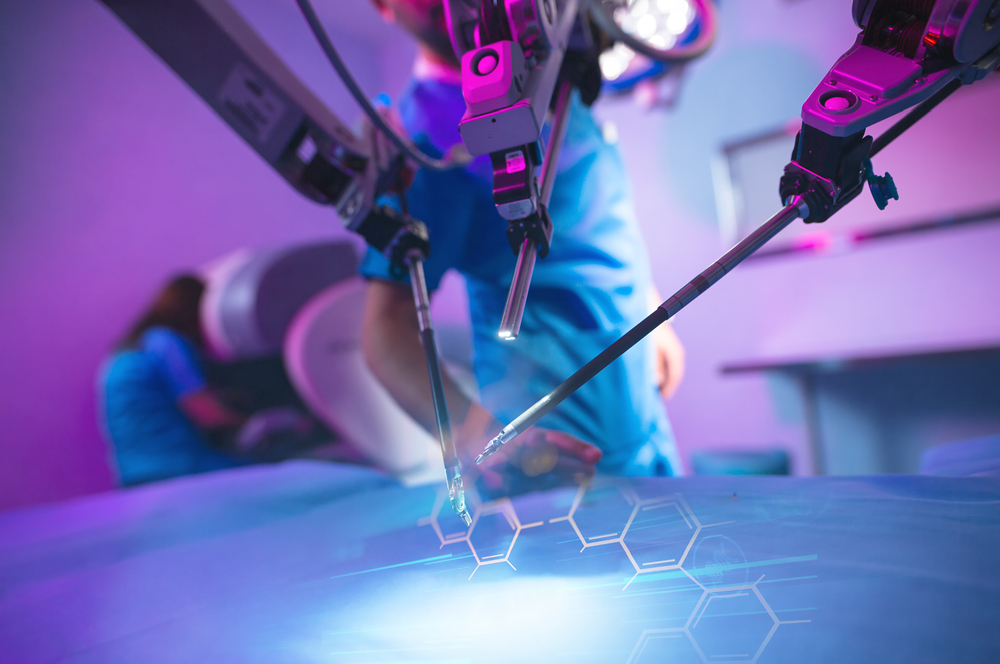The Role of Robotic Uro-Oncology Surgery in Treating Prostate Cancer

Prostate cancer is a prevalent disease affecting males worldwide. Whilst traditional treatments such as radiation therapy and open surgery have been used to treat prostate cancer, technical progressions have brought about the development of robotic uro-oncology surgery. In this blog post, we will examine the role of robotic uro-oncology surgery in treating prostate cancer, the merits of using robotic surgery in lieu of traditional surgery, and the types of robot operations utilised in urology robotic surgery.
What is Robotic Uro-Oncology and Urology Surgery?
Robotic surgery is a kind of minimally invasive surgery, which needs fewer cuts than normal open surgery. It is done using robotic instruments that are controlled by a surgeon who sits at a console with a joystick. The instruments are put into the body through small cuts, and the surgeon controls the instruments to do the surgery.
This can lead to less hurting and scarring for the patient, a faster recovery time, and a lower chance of problems. Robotic surgery also allows for more precision and control than normal surgery, which can cause better surgical results.
How Do Surgical Robots Work?
Surgical robots are advanced machines to help surgeons in operations. They have multiple arms that can hold surgical tools and a camera to give a 3D view of the place. The surgeon sits at a console and uses a joystick to control the robotic arms.
Surgical robots have robotic arms that are made to copy a human hand, but they are way more accurate and regulated. The doctor can manage the robotic arms to do delicate manoeuvres that would be hard or not able to do with normal surgical tools.
Advantages of Urology Robotic Surgery
Robotic surgery in urology has its perks compared to regular open surgery. Smaller cuts means less pain and no visible marks, which leads to a quicker healing time and lesser chances of issues.
Moreover, robotics surgery enables more precision and control than regular surgery. The robots are guided by a surgeon who is at a console and uses a joystick to move the instruments. This lets the surgeon make precise moves with more accuracy than with regular surgery tools.
Ultimately, robotic surgery can lead to better results. The robotic tools are accurate and managed well, which decreases the chances of issues during the procedure. This can give the patient a lower risk of infection, bleeding, and other issues, turning in better results.
Types of Robot Operations
There are various types of robot operations used in urology robotic surgery. For example:
- Robot-assisted prostatectomy: A robotic prostatectomy is an operation to take out the prostate gland. Tiny cuts are made in the patient's body and the robotic tools are put in. The doctor controls them from a console and uses the robotic equipment to take away the prostate gland, then sends it to the laboratory to be tested.
- Robot-assisted cystectomy: A robotic-aided cystectomy is when a surgeon takes out the bladder by using robotic tools that go in through small cuts in the person. The surgeon controls the robotic tools from a station, and then puts in a new bladder made from a part of the person's intestine.
- Robot-assisted nephrectomy: They put special tools through little cuts in the person's body and the doctor manages them from a control station. Then, the doctor takes out the kidney, which gets sent to a lab for testing.
- Robot-assisted partial nephrectomy: A robotic partial nephrectomy surgery is when part of a kidney is taken out. Little cuts are made in the body so the robotic tools can be inserted, and the doctor operates them from a control panel. The doctor will use the robotic tools to take away the part of the kidney that needs to be removed, leaving the rest of it as it is.
- Robot-assisted pyeloplasty: This is a surgical procedure to deal with ureteropelvic junction obstruction (UPJ). Small holes in the patient's body are made and the surgeon uses robotic tools from a control console to take out the blocked area of the ureter and then repair it to get back normal urine flow.
The Role of Robotic Uro-Oncology Surgery in Treating Prostate Cancer
Robotic uro-oncology surgery is getting more and more popular for treating prostate cancer. There are advantages of using robotic surgery for prostate cancer:
- Improved surgical precision: Robotic instruments are really precise and can do delicate moves with better precision than regular surgical tools. This can cause good surgical results for the patient.
- Shorter hospital stay: Robotic surgery with smaller cuts means a quicker hospital stay than regular surgery.
- Faster recovery time: Robotic surgery is less invasive than traditional surgery, meaning patients often feel less pain and recover quicker.
- Lower risk of complications: Robotic surgery can lower the chance of problems occurring during and after the procedure, resulting in better outcomes for the patient.
- Less blood loss: Robotic surgery being less invasive than traditional surgery, usually results in people losing less blood in the operation.
Conclusion
Robotic uro-oncology surgery is a new method that has changed the way prostate cancer is treated. The accuracy and control of robotic tools offer better surgical outcomes, faster healing, and fewer complications for patients. As technology progresses, robotic surgery will likely become a more common choice for prostate cancer and other urology problems. If you or somebody you know has prostate cancer, talk to your doctor if robotic uro-oncology surgery is an option for you.






